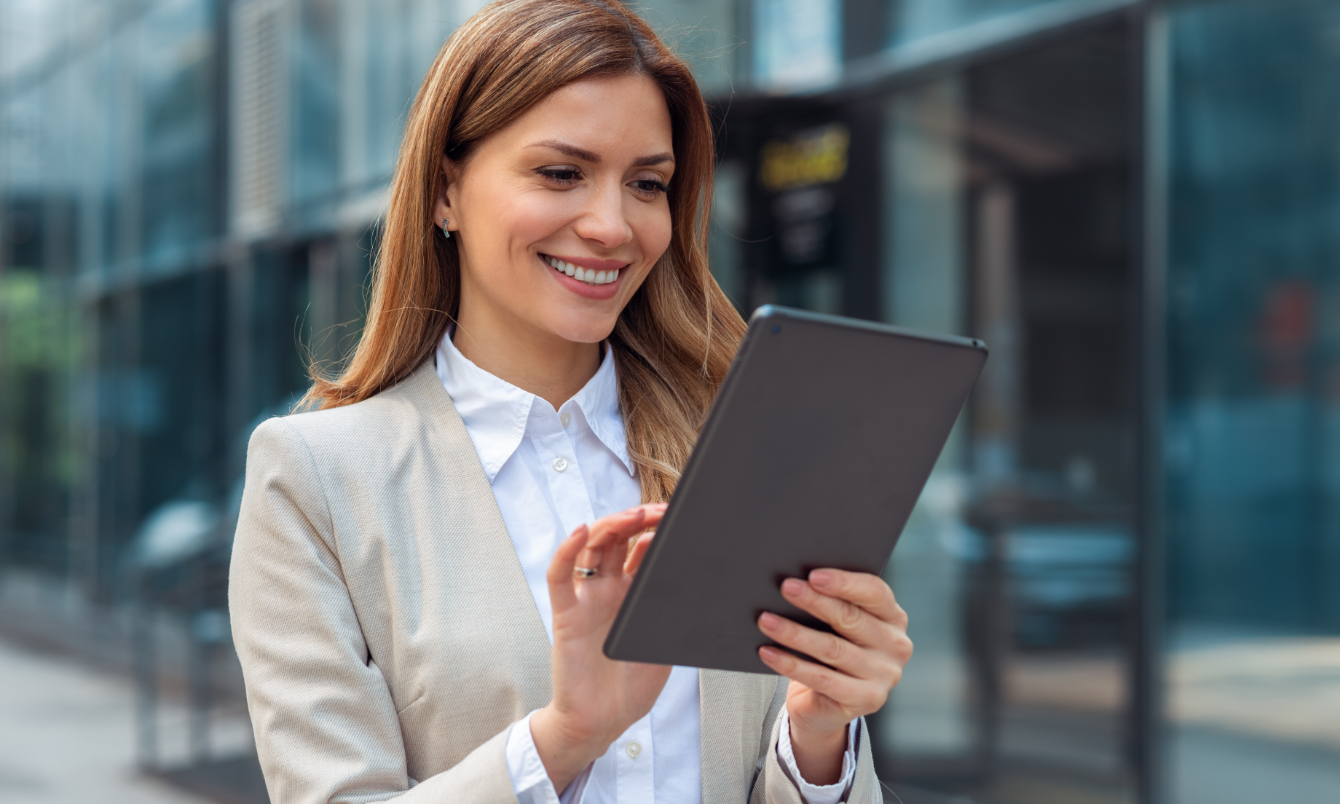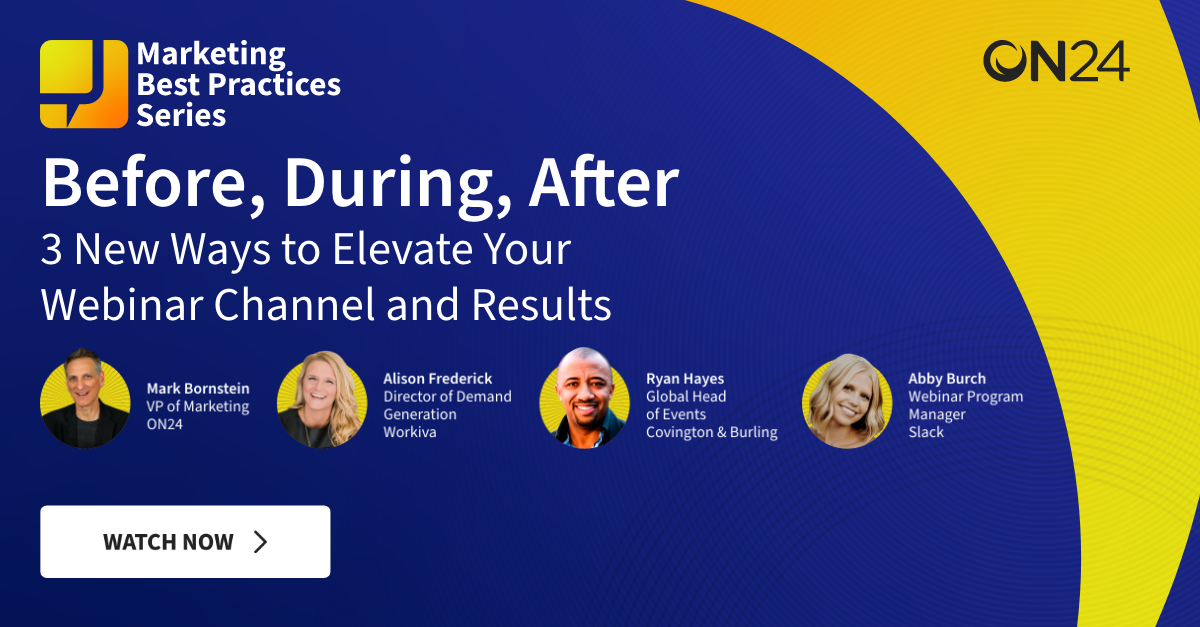Webinars provide a unique opportunity to scale content beyond its initial live date. From generative AI creating post-event content to on-demand recordings with captioning to connect with different regions, gone are the days when a webinar was simply a one-and-done process.
We sat down with three experts — Allison Frederick, Director of Demand Gen at Workiva; Ryan Haynes, Global Head of Events at Covington Burling; and Abby Dilger, Webinar Program Manager at Slack — to discuss the top three ways they make the most of their on-demand webinar engagement.
Here’s what they had to say.
Set Regions up for Success

Create a Webinar Kit
Creating a regional webinar kit is perfect for scaling your webinar program and ensuring that other regions can make great use of your content. Instead of delivering the same webinar for regions to play on demand, create and deliver a tailorable kit.
“It’s just really trying to set them up for success to then plug in the puzzle pieces” said Frederick.
So what do Frederick and her team at Workiva include in their kit? They include the webinar presentation itself, advertising that can be easily replicated or updated with templates, and an abstract that can be tweaked to target each region’s recommended partners.
With global reach comes global responsibility. While just recording and re-airing the webinar works in English-speaking areas, a different approach is needed to ensure that the content works for translations and speakers in other regions. That’s why customizable emails and landing page language are also part of the kit.
Frederick explained: “I think ultimately, the real help is in that kit since it enables the areas and content that we can’t always just easily replicate.” For example, instead of simply using closed captioning, delivering a package that summarizes the content or main idea of the webinar is actually more useful. Then, encouraging the use of a localized speaker ensures personalization and relatability with each region’s audience.
Promote with Content Hubs and Paid Ads
Create Robust Content Hubs
According to the most recent ON24 Digital Engagement Benchmarks report, 50% of audiences tend to view webinars live, while the other 50% view on demand. So how can you ensure continuous engagement with the audience members who prefer on-demand viewing?
Dilger explained how the team at Slack has a resource library on their website that hosts all of their webinars for on-demand access. “I think moving to content hubs is such a critical thing so you can get people to a place where they can go binge on content,” said Dilger.
Engage Social Media and Paid Ads
Sometimes, however, it’s not enough to simply include a resource library in hopes that viewers will find it. Dilger said that Slack takes things “one step further” by participating in paid ads for the on-demand events. “We’ve seen really good outcomes from posting the on-demand events to paid ads on LinkedIn, or encouraging audiences to check out the webinar with CTAs.”
The Slack sales department continues to reach out to encourage watching some of their top-performing webinars after the live event finishes.
Personalize and Simplify Content
For Haynes and his team at Covington-Burling, on-demand access is more critical than ever. “The lawyers and our clients are very busy, and sometimes they won’t have time to watch a complete on-demand event,” he explains. “This is where content simplification and personalization is key.”
Haynes and his team continue to experiment with personalization in follow-up emails. They also use AI-powered ACE to summarize content into a one-pager, or a “Key Takeaway” document for quicker communication.
In the spirit of simplification, the team’s follow-up outreach has even included a key quote from the event with the link to view. Takeaways such as “Here’s what you can learn,” or “Here’s what we covered” are included with additional CTAs to watch the event. Sometimes, an invite to meet up with the Covington-Burling team is included.
Repurpose Content With AI

Keep up With Audience Expectations
The end of your live webinar leads to a whole gateway of opportunities for additional content. For example, AI can help summarize your event and produce blog posts and e-books. These assets can refer viewers back to the on-demand webinar, or they can act as standalone pieces as part of a larger campaign.
AI can also help deliver pre-event and follow-up emails with the addressee’s name on them. Frederick explained that as consumers, “we expect this type of experience. I expect my pre-email and I expect my follow-up email, and to see some ads with my name on them.” Frederick and her team believe that using AI as a general part of their toolkit can help them keep up with audience expectations. This combination of personalization and segmentation can directly address the needs of a segment of viewers rather than applying one-size-fits-all general language.
With AI, Frederick and her team can allow for some viewers to view certain content, while providing other viewers entirely different content. “We couldn’t have done that even six months ago,” Frederick said.
Frederick also said how their marketing team uses insights to create a really great experience for their customers and potential customers—essentially, anyone who interacts with their brand. The team strives for a personalized experience no matter if audiences visit the brand’s website, watch a webinar, or attend a field marketing event.
Restructure Your Content to Meet Goals
Some of the most exciting and insightful parts of AI assistance include heat maps to see where a webinar’s content resonated most with its audience. Frederick sees these AI-identified insights as perfect opportunities to incorporate polls to help further engagement.
After your webinar, AI can also deliver a notification that points out three really good moments from the event. The notification can ask if you would like a video clip for promotion on social channels. Gone are the days where you need to sift through the webinar, using your best judgment to identify key moments.
For Frederick, Dilger, and Haynes, using AI to help with personalization and content simplification is a key part of elevating their on-demand webinar strategy and reaching their 2024 webinar program goals.


